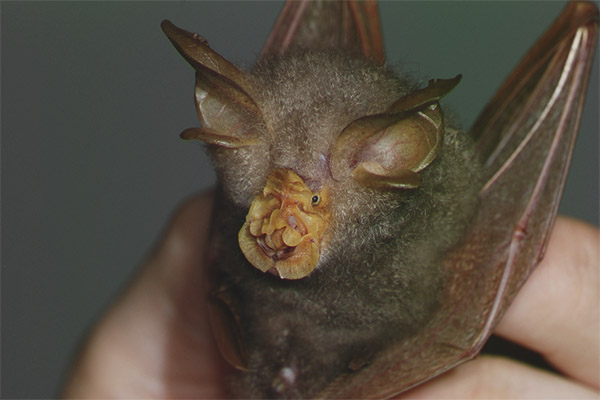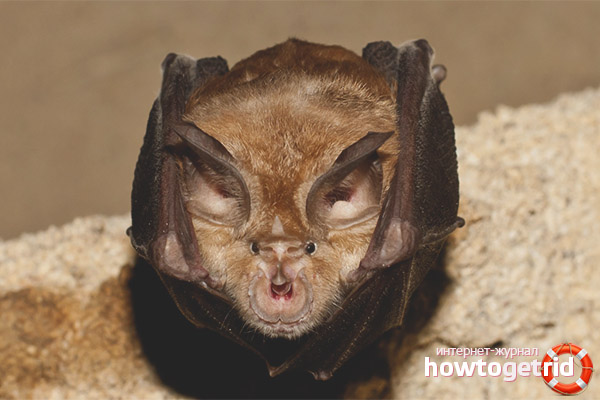The content of the article
Bats are found in Russia in the North Caucasus region. One of the species of bats is a large horseshoe.
Appearance
The length of the horseshoe reaches 10 cm, of which 3 cm is the tail, 7 cm is the length of the body itself. Such a bat weighs a little, an average of 27 grams, but the wingspan for such a small mammal is quite impressive, reaching 40 cm.
The nose of the horseshoe has a rather interesting shape, it contains skin growths resembling a horseshoe. Thanks to this nose shape, the great horseshoe got its name. Buzz helps to create sounds.
Varieties of bats, like a large horseshoe
Bats like the horseshoe can be found all over the world. In total there are 80 species, but only five species inhabit the territory of European countries.The distinctive characteristic feature is inherent in the large horseshoe-tail and its varieties: during sleep, these bats use their wings as a blanket and wrap themselves up with them.
Life style and nutrition
They prefer to feed themselves with horseshoes at night. The food for them are insects, mainly beetles. Having outlined the route of a night hunt once, horseshoes subsequently rarely change it. Insect animals catch teeth or use their webbed wings for this. Wings for horseshoe bones are a kind of hands, they send beetles immediately to the mouth. Such bats eat small insects right on the fly, and with large insects it is a little more difficult to eat,hanging on a tree branch. Thanks to skin growths on the nose, the horseshoes can make sounds even while eating.
Mating of a large horseshoe
Podkovonosy not breed every year. Females reach sexual maturity only from two years, and sometimes to three years. In connection with this circumstance, subject to the disappearance of places suitable for the residence of a horseshoe, its number may sharply decrease.
Large horses usually mate in deep autumn, before hibernation. Embryo development is directly dependent on the ambient temperature, the warmer, the faster the germination of the embryo. In this regard, pregnant female individuals are combined into one colony. Only one individual is born. At first, the cubs of the horseshoe are completely blind and naked, but they grow up so quickly that when they reach 22 days they begin to fly. When the cubs come 30-40 days, they can catch their own food and fly over long distances.
People's responsibility
The population of bats, and more specifically of large horseshoes, has declined by 90% over the previous century, and continues to decrease in the present.Who is to blame? Of course, man. These are people to blame for the disappearance of a large number of habitats of the horseshoe. The development of rural land at the beginning of the last century led to a decrease in the primeval form of fields and meadows. Poisonous substances used in agriculture destroy insects and, as a result, bats that feed on them. All of this has led to the inclusion of large horseshoes in the list of endangered animal species.
Peculiarities of the behavior of a large horseshoe
They rarely leave their young alone, since they, left unattended, create a lot of noise and shouting, which can give shelter to a colony of bats.
When the horseshoe hibernates, it makes 10 breaths in one minute, just before leaving the hibernation, their number in a minute increases and reaches 200 breaths.
When the horseshoe flies, he catches ultrasonic waves, moving his ears 60 times in one second.












To send